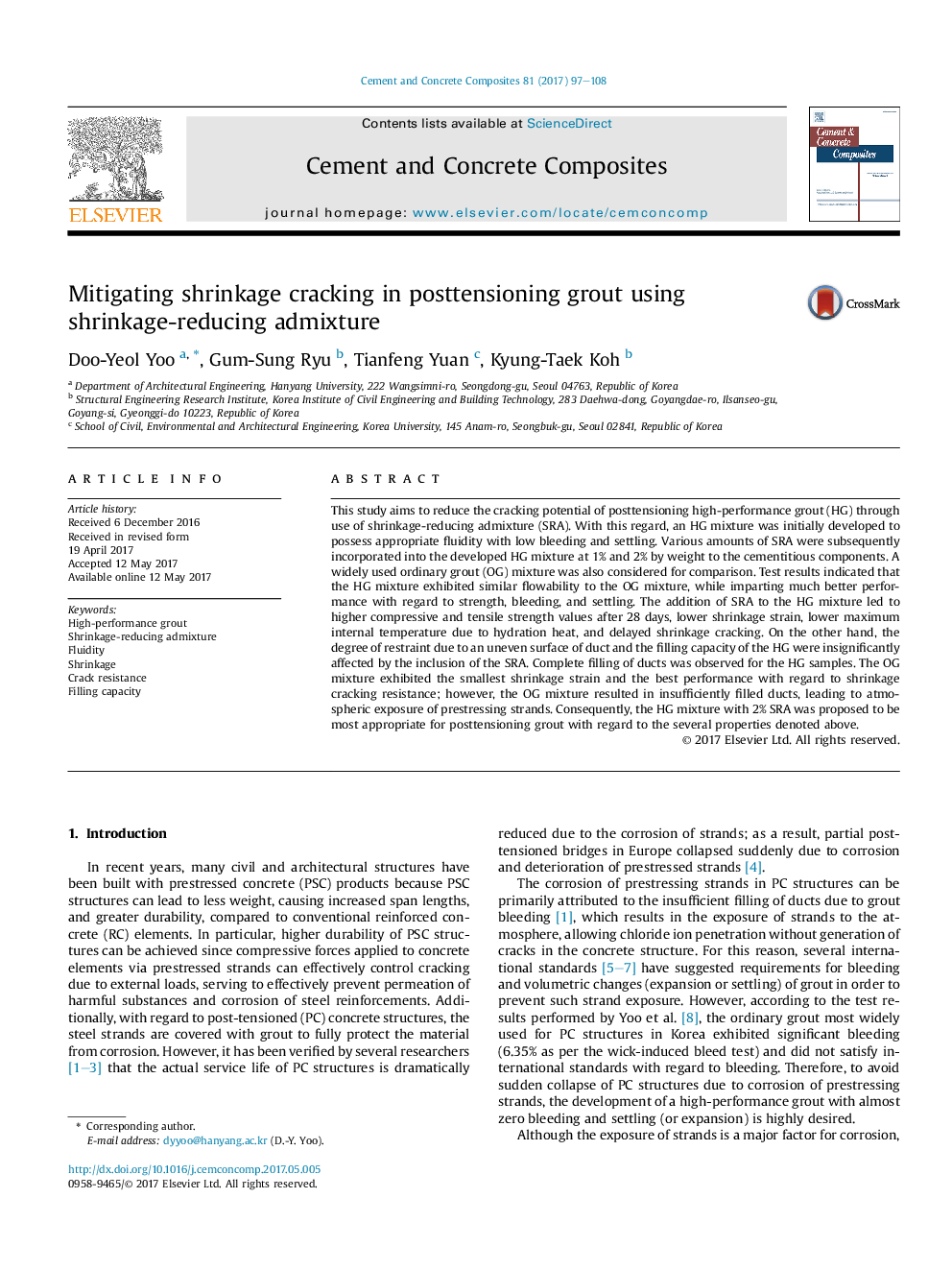| Article ID | Journal | Published Year | Pages | File Type |
|---|---|---|---|---|
| 5436845 | Cement and Concrete Composites | 2017 | 12 Pages |
Abstract
This study aims to reduce the cracking potential of posttensioning high-performance grout (HG) through use of shrinkage-reducing admixture (SRA). With this regard, an HG mixture was initially developed to possess appropriate fluidity with low bleeding and settling. Various amounts of SRA were subsequently incorporated into the developed HG mixture at 1% and 2% by weight to the cementitious components. A widely used ordinary grout (OG) mixture was also considered for comparison. Test results indicated that the HG mixture exhibited similar flowability to the OG mixture, while imparting much better performance with regard to strength, bleeding, and settling. The addition of SRA to the HG mixture led to higher compressive and tensile strength values after 28 days, lower shrinkage strain, lower maximum internal temperature due to hydration heat, and delayed shrinkage cracking. On the other hand, the degree of restraint due to an uneven surface of duct and the filling capacity of the HG were insignificantly affected by the inclusion of the SRA. Complete filling of ducts was observed for the HG samples. The OG mixture exhibited the smallest shrinkage strain and the best performance with regard to shrinkage cracking resistance; however, the OG mixture resulted in insufficiently filled ducts, leading to atmospheric exposure of prestressing strands. Consequently, the HG mixture with 2% SRA was proposed to be most appropriate for posttensioning grout with regard to the several properties denoted above.
Related Topics
Physical Sciences and Engineering
Engineering
Industrial and Manufacturing Engineering
Authors
Doo-Yeol Yoo, Gum-Sung Ryu, Tianfeng Yuan, Kyung-Taek Koh,
